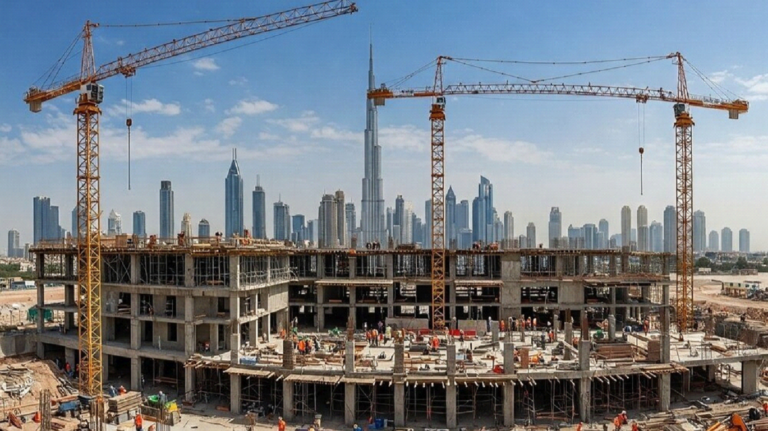The transformation of workplace areas over the past century is a testomony to altering societal values, technological developments, and our understanding of what makes a productive workspace. Gone are the times when rows of cubicles outlined the company surroundings, a setup that prioritised house effectivity over worker satisfaction or collaboration. At the moment, we’re witnessing an period the place the design of workspaces is as a lot about fostering a tradition of collaboration as it’s about accommodating desks and computer systems. This shift displays a broader pattern in direction of prioritising worker well-being and productiveness, recognising that the areas we work in profoundly impression our creativity, satisfaction, and effectivity. This text explores the journey from the inflexible cubicles of the previous to the dynamic, collaborative workspaces of the twenty first century, highlighting key milestones and the driving forces behind them.
Shifting Dynamics: The Rise of Open-Plan Workplaces
The idea of open-plan places of work, designed to foster higher communication and a way of neighborhood amongst staff, has roots that stretch again additional than most realise. It was in 1935 that architect Frank Lloyd Wright launched the primary open-plan workplace in the USA, envisioning a workspace freed from boundaries the place concepts may circulate as freely because the house itself. This concept, revolutionary on the time, progressively took maintain and expanded throughout the globe. By the early 2000s, it turned the dominant structure in over 70% of US offices. The rationale was simple: open areas would encourage transparency, scale back pointless hierarchy, and facilitate simpler collaboration amongst workers.
Nonetheless, the transition wasn’t with out its challenges. Critics argued that such layouts typically led to distractions and an absence of privateness, doubtlessly hampering productiveness. But, supporters countered that the advantages of enhanced communication and a stronger sense of belonging outweighed these drawbacks. This debate underscored a basic shift in office philosophy—from viewing workers as cogs in a machine to recognising them as key drivers of innovation and success.
Hybrid Workspaces: Discovering the Steadiness
The notion of hybrid workspaces emerged as an answer to the dichotomy introduced by cubicles and open-plan places of work. These environments are designed to supply the very best of each worlds: areas for collaboration alongside personal areas for targeted work. “Moderately than give attention to which days of the week to return to the workplace, firms ought to as a substitute present workers with readability on the kind of office expertise that greatest aligns with their particular job position and profession development,” suggests Jeanne Meister, writing for Forbes. This attitude acknowledges that there isn’t a generic answer to workplace design; as a substitute, flexibility and adaptableness to particular person wants are paramount.
Brian Elliott, an government advisor on flexibility and the founding father of the analysis consortium Future Discussion board, echoes this sentiment. He believes that “the idea of spending 5 days per week within the workplace is lifeless, that top-down, one-size-fits-all strategy can result in plenty of resentment amongst staff.” These insights underline a rising consensus that the way forward for work isn’t just about the place we work, however how our work environments mirror and assist our various wants and preferences. Hybrid workspaces, subsequently, should not only a momentary pattern however a major evolution in designing places of work that really serve their occupants.
Privateness and Productiveness: Introducing Workplace Pods
The fashionable office continues to evolve, balancing the will for openness with the necessity for privateness. Enter the idea of workplace pods—a revolutionary answer that addresses the quandary of sustaining privateness and productiveness in predominantly open-plan places of work. These self-contained items, designed to function quiet havens for particular person work or small conferences, have shortly gained recognition. They symbolise a shift in direction of recognising that whereas collaboration is essential, the necessity for focus and seclusion within the office is equally important. Round 85% of employees have expressed frustration over an absence of privateness at work, indicating a widespread demand for areas that cater to targeted duties with out distractions.
Workplace pods, or assembly pods as they’re typically referred to as, provide a flexible answer to this problem. These buildings are ingeniously designed to suit inside bigger workplace environments, offering soundproofed areas for workers in search of solitude or confidentiality. This innovation represents a broader pattern in direction of adaptable workplace layouts that may be customised to the evolving wants of companies and their workforce. The combination of office pod solutions for your business underscores a dedication to worker satisfaction and enhances general productiveness by permitting for a stability between collaborative and unbiased work.
Designing for Nicely-being: The Significance of Ergonomics and Nature
Because the dialog round workplace design shifts in direction of worker well-being, the importance of ergonomics and pure components inside the workspace has been dropped at the forefront. Research present that workers who’re glad with their bodily workspace are roughly 12% more productive. This statistic highlights the direct correlation between well-designed workplace areas and worker output. Ergonomics—tailoring the workspace to suit the physiological wants of the person—performs a vital position on this equation. From adjustable chairs and desks to the strategic placement of screens, ergonomics seeks to scale back bodily pressure and improve consolation through the workday.
Furthermore, the mixing of nature into workplace designs, referred to as biophilic design, has been proven to spice up worker well-being and productiveness additional. The presence of pure mild, crops, and views of nature not solely reduces stress but additionally encourages creativity and a optimistic work surroundings. This strategy aligns with the broader understanding that worker well-being extends past bodily well being, encompassing psychological and emotional features as nicely. As firms more and more recognise the worth of their workers’ holistic well being, the design of workspaces is evolving to mirror these priorities, creating environments that assist not simply the work that must be accomplished however the individuals doing it.
Conclusion: Embracing Change within the Office
The evolution of workplace areas all through the twenty first century from inflexible cubicles to dynamic, collaborative environments underscores a broader transformation inside the office. This journey displays a deepening understanding of how a lot our environment affect creativity, productiveness, and well-being. As we transfer ahead, the problem for companies and designers alike will probably be to proceed adapting these areas to fulfill the altering wants of the workforce and the inevitable developments in know-how.
The shift in direction of workplace designs that prioritise flexibility, privateness, and well-being isn’t just a response to the altering dynamics of labor however a forward-looking strategy that anticipates the way forward for the company world. As firms try to draw and retain the very best expertise, the standard of the office surroundings has emerged as a key differentiator. On this context, the workplace is now not only a place to work; it’s an area that displays an organization’s values, tradition, and imaginative and prescient for the long run.
Furthermore, the rise of distant and hybrid work fashions has additional sophisticated the equation, making it clear that the workplace of the long run will should be much more adaptable and conscious of particular person wants. On this ever-changing panorama, the teachings realized from the previous century’s evolution of workplace design present a helpful blueprint for creating areas that meet practical necessities and enrich the lives of those that inhabit them.
In conclusion, the evolution of workplace areas from cubicles to collaboration, and the introduction of components like workplace pods and ergonomically designed workstations, signify extra than simply traits in inside design. They’re a part of a broader shift in direction of recognising the worth of human capital within the company equation. By creating environments that prioritise workers’ well being, happiness, and productiveness, companies are enhancing their backside line and contributing to a extra optimistic and sustainable future for work.
As we proceed to navigate the complexities of the trendy office, it’s clear that flexibility, innovation, and a deep dedication to worker well-being would be the guiding rules of workplace design. The way forward for work isn’t just about the place we work, however how we work. And as we embrace change, we unlock the potential for a extra collaborative, productive, and fulfilling work surroundings for everybody.











